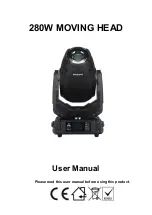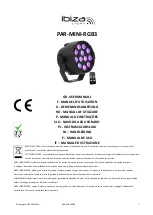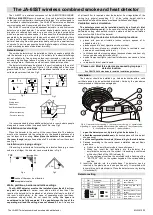
© MEDISTIM 2015
9
5. OPERATING THE VeriQ™
The purpose of this section is to provide the user with a refer-
ence for the operation of the VeriQ™.
5.1 Requirements for personnel
To successfully operate the VeriQ™, at least two persons are
required. One controlling the probe and the other the system
controls.
The main task for the system operator is to prepare the
system before use, adjust the system during operation and to
save essential findings in order to document the procedure.
During the operation, it is important for the surgeon and op-
erator to maintain a good dialog to work effectively and get
the best possible results.
5.2 Basic principles of operation
VeriQ™ incorporates 19-inch touch screen with a graphical
user interface. Operation of the VeriQ™ is intended to be very
intuitive, eliminating non-essential commands, and present-
ing an on-screen keyboard only when necessary. To further
simplify operation for novice users, certain advanced func-
tions are not readily-accessible. Advanced functions can be
activated once the operator is familiar with the basic system
operation.
The patient name will always be displayed at the top center
of the screen. When no patient data has been entered or
selected, the system will use the current date and time as
the patient name. In the top right corner the current data and
time is displayed. On Pay-Per-Procedure (PPP) systems a
field in the top right corner will display the remaining proce
-
dure time once a procedure has been activated.
The VeriQ™ has five main screen views:
1. Home screen
2. Measure screen
3. Data screen
4. Help screen
5. System Settings screen.
The user can move between screens by pressing the screen
tabs located in the top left corner. The ”Home” screen is used
to enter patient data when starting a new surgical procedure
and when searching for a patient in the database. This is the
start-up page, and by pressing the ”Home” tab the system
will return to this screen.
The ”Measure” screen is the main screen for flow measure
-
ments, and can be accessed by pressing the ”Measure”
screen tab or by pressing ”OK” on the patient data screen.
Systems installed based on a ”pay-per-procedure” model
must be activated by using a smart card. On-screen prompts
will assist in system activation, and when a smart card has
not been inserted into the system, the message ”Insert valid
smart card to activate” will be shown in the message bar.
System status is displayed in the message bar that appears
near the top of the VeriQ™ monitor. To alert the user of status
changes, the background color will change. Press the ”Data”
tab to enter the screen that presents a thumbnail view of
each recorded curve on the current selected patient. Here,
stored datasets can be selected for viewing, editing, report-
ing or exporting. The ”Help Screen” contains an electronic
User Manual, and video tutorials.The “System settings”
screen contain the user configurable settings for the VeriQ™.
5.2.1 Correct plugging and unplugging of probes
To avoid accidental errors related to plugging a probe in the
wrong connector, the VeriQ™ probe panel and all probes
have unique keying features. This ensures that only TTFM
probes can be plugged into the flow channels and vice versa
for the other channels.
When plugging a probe into the system connector, hold the
probe with the embossed arrows facing upwards, see picture
below, and press straight inwards.
All Medistim probes require very little force to be inserted
or removed. If excessive force is needed to plug a probe
this is a sign that something is damaged either in the probe
connector or on the system side connector. Inspect both
connectors carefully to identify possible bent or broken pins
in the probe connector, plugged or otherwise obstructed
holes in the system side connector.
Unplugging the probe is done by gripping the probe on the
widest part of the connector and pulling straight out. This
will release the locking mechanism and the probe will unplug
correctly. Do not attempt to unplug by pulling on the cable
or strain relief, this will not release the locking mechanism
and may damage the probe. See below image correct and
incorrect removal technique.










































